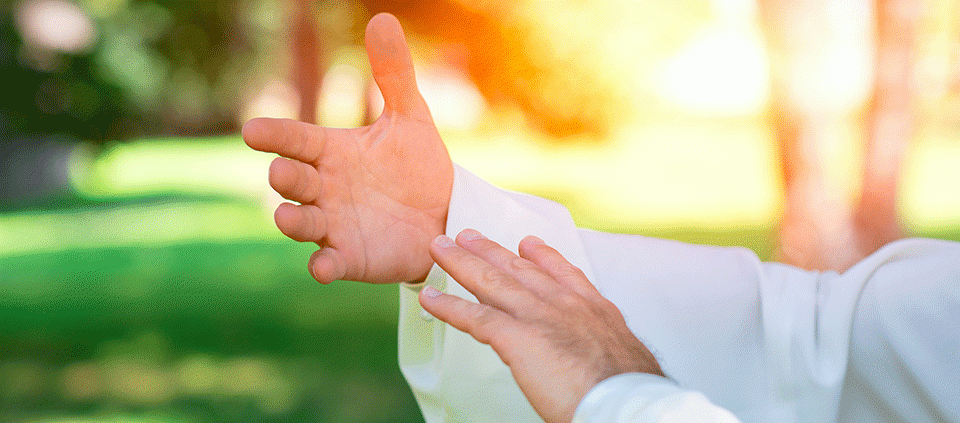The Power of Qigong to Create Balance and Prevent Disease

Qigong, pronounced “chee gung,” means literally the skill (gong) of regulating life energy (qi) to improve health. It is an ancient Chinese system of posture, exercise, respiratory techniques, and meditation. Qigong has three major applications: spiritual, athletics, and healing.
In spiritual qigong, one’s primary aim is to develop tranquility, harmony with nature, and enlightenment. Athletic qigong includes exercises that cultivate strength, flexibility, coordination, and balance, and lessen the likelihood of injury. Athletic qigong can improve performance in running, golf, football, martial arts, or any other sport. Healing qigong, sometimes called “medical qigong” is the self-healing and preventive aspect of Chinese medicine, as well as a powerful and enjoyable way for healthy people to improve vitality and well-being.
Some qigong styles focus more on one aspect of qigong than another—for example, Coiling Silk Qigong is used to unwind knotted energy and improve health, and slow, deep “Embryonic Respiration” to transform the spirit. There are a few qigong methods that clearly embrace all three aspects, such as tai chi, which includes a powerful repertoire of skills easily applicable to martial arts, and yet is dubbed by Harvard University researchers as “medication in motion.”
Qigong is based on the premise that the human body is an energy system. As long as it has energy or qi, it is alive; when energy is gone, it is dead. This makes good scientific sense. A living cell has an electric charge; electrical signals help control growth and regeneration and allow messages to pass through the nervous system. Like a computer, the electrical signaling system may be damaged through destructive influences: viruses, bacteria, trauma, pollution, and stress. Or the electric signals and information they carry may become fragmented and ineffective as a simple consequence of aging. The body’s “wiring” becomes frayed and circuits are broken after long-term use. Qigong is like a disk-repair utility that “optimizes” the body’s energy, shifting data to make it more accessible; it also repairs the wiring and restores the body’s original healing program, its innate tendency toward balance.
Experimental evidence suggests that qigong may be an effective adjunct in the treatment of chronic pain, asthma, arthritis, diabetes, headaches, gastrointestinal disorders, and chronic fatigue, as well as cancer and heart disease—the two major killers of our age. In spite of the miracles of medical science, our ability to prevent or cure these two epidemics has hardly changed in more than 60 years. Mortality rates from heart disease have fallen one to two percent per year—perhaps from earlier detection and subsequent lifestyle adjustments—but cardiovascular disease is more widespread than ever. The age-adjusted mortality rate for cancer has remained the same since the 1940s; approximately one out of every three people in North America will develop cancer during their lifetime.
Through qigong practice, we can take better control of our health. Although life is always a gamble and no therapy is certain, qigong can shift the odds in favor of a long and healthy life.
Put in Chinese terms, qigong exercises and meditations improve health because qigong has three effects on the qi, the life energy:
- It cleanses the qi of impurities, pathogens, and toxins
- It gathers the qi, creating a reservoir of healing vitality in the body
- It circulates the qi, opening places of stagnation and blockage where the energy channels are dammed. As qi moves, it becomes clearer and healthier, like a rapidly flowing mountain stream. Healthy qi is distributed to areas of disease or distress.
More important than these theories is the experience of the practitioner. Qigong students begins to actually sense energy in the body; within months, they are able to detect when qi is turbid, depleted, excessive, or stagnant, and know what to do to balance or correct the condition.
One of the greatest benefits of qigong is that illness may be detected while it is still subclinical—that is, before it has reached such a serious stage that it shows up in a medical examination. As the Chinese philosophical text the Yi Jing (Classic of Change) states, “Misfortune is long in the making.” Think of the time between cancer initiation—just a few cells passing on damaged DNA to other cells—and the stage of development in which cancer becomes a palpable growth or visible on a scan. Some breast cancers grow for eight years before they appear on a mammogram. By practicing qigong, illness may be arrested and cured before, by allopathic medical definition, one even has it. Qigong practitioners experience a profound shift of identity, realizing themselves as an energy being, in harmony with the energy of nature and life. They sense any break in the flow of energy within or between self and nature, and have the tools to remedy any disturbance in this force.
Ken Cohen, world-renowned Qigong and Tai Chi Grandmaster, has been practicing these arts for more than 50 years. He is the author of The Way of Qigong and more than 200 journal articles, including several in the Chinese language. The first person to teach Qigong is American medical schools, Ken won the Lifetime Achievement Award in Energy Medicine in 2003.
Find out about upcoming programs with Ken Cohen at Kripalu.
© Kripalu Center for Yoga & Health. All rights reserved. To request permission to reprint, please e-mail editor@kripalu.org.
Ken Cohen, MA, world-renowned qigong master and author of The Way of Qigong, is the winner of the Lifetime Achievement Award in Energy Medicine.
Full Bio and Programs